Local Management System of Dragon’s Blood Tree (Dracaena cinnabari Balf. f.) Resin in Firmihin Forest, Socotra Island, Yemen
Abstract
:1. Introduction
2. Materials and Method
2.1. Study Area
2.2. Data Collection
2.3. Data Analysis
3. Results
3.1. Firmihin Forest Structure
3.2. Dragon’s Blood Harvesting
- The community of Firmihin (the Dimeroh community) generally controls the Firmihin forest.
- The neighboring communities are represented by the Dierho community, which is the closest neighbor and traditionally shares pastures with the Firmihin community. They also share some responsibility in decision-making about dragon’s blood tree resin harvesting.
- The Shibehon community, which has been invited to harvest dragon’s blood resin due to neighbor and family relationships.
- Others, such as the communities of the Haggeher Mountains, Tida’a, Deismo, and Diksam, hear about the opening of the harvesting season or are invited by their friends.
3.3. The Impact of Dragon’s Blood Harvesting on Trees
3.4. Value Chain Analysis
4. Discussion
4.1. Population Structure
4.2. Population Decline due to Resin Harvesting
4.3. Harvesting Rules
- Harvesting of dragon’s blood resin should occur only during the period announced by community leaders.
- A knife should be used for harvesting.
- Do not damage the tree except the breaking of 2–3 branches to enable entry into the crown (it is better to search for another tree rather than break the branches).
- Do not use axes or stones for harvesting.
- Do not make new wounds.
- Do not hit the tree hard.
- Do not cut as deep as the white bark.
- Do not collect Edha’a (mixed resin) if you do not know how to do it.
4.4. The Economy of Dragon’s Blood
5. Conclusions
Acknowledgments
Funding
Conflicts of Interest
References
- Richards, M. The Potential of Non-Timber Forest Products in Sustainable Natural Forest Management in Amazonia. Commonw. For. Rev. 1993, 72, 21–27. [Google Scholar]
- Ruiz Perez, M.; Ndoye, O.; Eyebe, A.; Puntodewo, A. Spatial Characterisation of Non-Timber Forest Products Markets in the Humid Forest Zone of Cameroon. Int. For. Rev. 2000, 2, 71–83. [Google Scholar]
- UNCTAD. Commodities at a Glance: Special Issue on Gum Arabic. In United Nations Conference on Trade and Development; UNCTAD: Geneva, Switzerland, 2018; Vol. Issue No.8. [Google Scholar]
- Fleurentin, J.; Mazars, G.; Pelt, J.-M. Cultural background of the medicinal plants of Yemen. J. Ethnopharmacol. 1983, 7, 183–203. [Google Scholar] [CrossRef]
- Maděra, P.; Paschová, Z.; Ansorgová, A.; Vrškový, B.; Lvončík, S.; Habrová, H. Volatile Compounds in Oleo-gum Resin of Socotran Species of Burseraceae. Acta Univ. Agric. Silvic. Mendel. Brun. 2017, 65, 73–90. [Google Scholar] [CrossRef] [Green Version]
- Miller, A.G.; Morris, M. Ethnoflora of the Soqotra Archipelago; Royal Botanic Garden Edinburgh: Edinburgh, UK, 2004. [Google Scholar]
- Brown, G.; Mies, B.A. Vegetation Ecology of Socotra; Springer Science and Business Media: Berlin/Heidelberg, Germany, 2012; Volume 7. [Google Scholar]
- Rejzek, M.; Svatek, M.; Šebesta, J.; Adolt, R.; Madera, P.; Matula, R. Loss of a single tree species will lead to an overall decline in plant diversity: Effect of Dracaena cinnabari Balf. f. on the vegetation of Socotra Island. Boil. Conserv. 2016, 196, 165–172. [Google Scholar] [CrossRef]
- Maděra, P.; Volařík, D.; Patočka, Z.; Kalivodová, H.; Divín, J.; Rejžek, M.; Vybíral, J.; Lvončík, S.; Jeník, D.; Hanáček, P.; et al. Sustainable Land Use Management Needed to Conserve the Dragon’s Blood Tree of Socotra Island, a Vulnerable Endemic Umbrella Species. Sustainability 2019, 11, 3557. [Google Scholar] [CrossRef] [Green Version]
- Adolt, R.; Pavlis, J. Age structure and growth of Dracaena cinnabari populations on Socotra. Trees 2004, 18, 43–53. [Google Scholar] [CrossRef]
- Attorre, F.; Francesconi, F.; Taleb, N.; Scholte, P.; Saed, A.; Alfó, M.; Bruno, F. Will dragonblood survive the next period of climate change? Current and future potential distribution of Dracaena cinnabari (Socotra, Yemen). Boil. Conserv. 2007, 138, 430–439. [Google Scholar] [CrossRef]
- Hubálková, I. Prediction of Dragon’s Blood Tree (Dracaena cinnabari Balf.) Stand Sample Density on Soqotra Island. J. Landsc. Ecol. 2011, 4, 5–17. [Google Scholar] [CrossRef] [Green Version]
- Adolt, R.; Habrová, H.; Maděra, P. Crown age estimation of a monocotyledonous tree species Dracaena cinnabari using logistic regression. Trees 2012, 26, 1287–1298. [Google Scholar] [CrossRef]
- Adolt, R.; Maděra, P.; Abraham, J.; Čupa, P.; Svatek, M.; Matula, R.; Šebesta, J.; Čermák, M.; Volařík, D.; Koutecký, T.; et al. Field Survey of Dracaena cinnabari Populations in Firmihin, Socotra Island: Methodology and Preliminary Results. J. Landsc. Ecol. 2013, 6, 7–34. [Google Scholar] [CrossRef] [Green Version]
- Habrová, H.; Buček, A. Overview of Biotope Types of Socotra Island. J. Landsc. Ecol. 2013, 6, 60–83. [Google Scholar] [CrossRef]
- Habrová, H.; Cermak, Z.; Pavlis, J. Dragon’s blood tree—Threatened by overmaturity, not by extinction: Dynamics of a Dracaena cinnabari woodland in the mountains of Soqotra. Boil. Conserv. 2009, 142, 772–778. [Google Scholar] [CrossRef]
- Carlquist, S. Monocot Xylem Revisited: New Information, New Paradigms. Bot. Rev. 2012, 78, 87–153. [Google Scholar] [CrossRef]
- Rudall, P. Lateral meristems and stem thickening growth in monocotyledons. Bot. Rev. 1991, 57, 150–163. [Google Scholar] [CrossRef]
- Jura-Morawiec, J.; Tulik, M.; Iqbal, M. Lateral Meristems Responsible for Secondary Growth of the Monocotyledons: A Survey of the State of the Art. Bot. Rev. 2015, 81, 150–161. [Google Scholar] [CrossRef] [PubMed] [Green Version]
- Jura-Morawiec, J. Atypical origin, structure and arrangement of secondary tracheary elements in the stem of the monocotyledonous dragon tree, Dracaena draco. Planta 2016, 245, 93–99. [Google Scholar] [CrossRef] [Green Version]
- Jura-Morawiec, J.; Wiland-Szymańska, J. A novel insight into the structure of amphivasal secondary bundles on the example of Dracaena draco L. stem. Trees 2014, 28, 871–877. [Google Scholar] [CrossRef]
- Klimko, M.; Wiland-Szymanska, J. Scanning Electron Microscopic Studies of Leaf Surface in Taxa of Genus Dracaena L. (Dracaenaceae). Rocz. Akad. Rol. W Pozn. Bot.-Steciana 2008, 12, 117–127. [Google Scholar]
- Jupa, R.; Plichta, R.; Paschová, Z.; Nadezhdina, N.; Gebauer, R. Mechanisms underlying the long-term survival of the monocot Dracaena marginata under drought conditions. Tree Physiol. 2017, 37, 1182–1197. [Google Scholar] [CrossRef] [Green Version]
- Cui, J.-L.; Wang, C.-L.; Guo, S.; Xiao, P.-G.; Wang, M. Stimulation of dragon’s blood accumulation in Dracaena cambodiana via fungal inoculation. Fitoterapia 2013, 87, 31–36. [Google Scholar] [CrossRef] [PubMed]
- Fan, L.-L.; Tu, P.-F.; He, J.-X.; Chen, H.-B.; Cai, S.-Q. Microscopical Study of Original Plant of Chinese Drug “Dragon’s Blood” Dracaena cochinchinensis and Distribution and Constituents Detection of Its Resin. China J. Chin. Mater. Medica 2008, 33, 1112–1117. [Google Scholar]
- Gonzalez, A.G.; Hernández, J.C.; León, F.; Padrón, J.I.; Estévez, F.; Quintana, J.; Bermejo, J. Steroidal Saponins from the Bark of Dracaenadraco and Their Cytotoxic Activities. J. Nat. Prod. 2003, 66, 793–798. [Google Scholar] [CrossRef] [PubMed]
- Wang, X.-H.; Zhang, C.; Yang, L.-L.; Gomes-Laranjo, J. Production of dragon’s blood in Dracaena cochinchinensis plants by inoculation of Fusarium proliferatum. Plant Sci. 2011, 180, 292–299. [Google Scholar] [CrossRef]
- Jura-Morawiec, J.; Tulik, M. Morpho-anatomical basis of dragon’s blood secretion in Dracaena draco stem. Flora-Morphol. Distrib. Funct. Ecol. Plants 2015, 213, 1–5. [Google Scholar] [CrossRef]
- Nadezhdina, N.; Nadezhdin, V. Are Dracaena nebulophytes Able to Drink Atmospheric Water? Environ. Exp. Bot. 2017, 139, 57–66. [Google Scholar] [CrossRef]
- Nadezhdina, N.; Al-Okaishi, A.; Maděra, P. Sap Flow Measurements in a Socotra Dragon’s Blood Tree (Dracaena cinnabari) in its Area of Origin. Trop. Plant Boil. 2018, 11, 107–118. [Google Scholar] [CrossRef]
- Nadezhdina, N.; Gebauer, R.; Nadezhdin, V.; Plichta, R. Water transport secrets of the dragon’s blood trees revealed through sap flow measurements following partial stem incision. Flora-Morphol. Distrib. Funct. Ecol. Plants 2019, 250, 44–51. [Google Scholar] [CrossRef]
- Nadezhdina, N.; Plichta, R.; Nadezhdin, V.; Gebauer, R.; Jupa, R.; Habrová, H.; Maděra, P. A comparative structural and functional study of leaf traits and sap flow in Dracaena cinnabari and Dracaena draco seedlings. Funct. Plant Boil. 2015, 42, 1092–1105. [Google Scholar] [CrossRef]
- Mayer, A.-N. Probleme Touristischer Entwicklung auf der Insel Soqotra: Vom Missverständnis “Ökotourismus” zu Nachhaltigem Tourismus? Reichert: Wiesbaden, Germany, 2009; Jemen Studien 19; pp. 1–152. [Google Scholar]
- Breasted, J.H.; Schoff, W.H. The Periplus of the Erythraean Sea: Travel and Trade in the Indian Ocean by a Merchant of the First Century. Am. Hist. Rev. 1912, 18, 118–120. [Google Scholar] [CrossRef]
- Lucas, G.; Synge, H. The IUCN Plant Red Data Book; IUCN: Morges, Switzerland, 1978; pp. 193–194. [Google Scholar]
- Culek, M. Geological and Morphological Evolution of the Socotra Archipelago (Yemen) from the Biogeographical View. J. Landsc. Ecol. 2013, 6, 84–108. [Google Scholar] [CrossRef] [Green Version]
- Scholte, P.; De Geest, P. The climate of Socotra Island (Yemen): A first-time assessment of the timing of the monsoon wind reversal and its influence on precipitation and vegetation patterns. J. Arid. Environ. 2010, 74, 1507–1515. [Google Scholar] [CrossRef]
- Culek, M.; Kral, K.; Habrova, H.; Adolt, R.; Pavliš, J.; Maděra, P. Socotra’s Annual Weather Pattern. In Socotra: A Natural History of the Islands and Their People; Odyssey Books & Guides: Hone Kong, China, 2006; pp. 62–65. [Google Scholar]
- Král, K.; Pavlis, J. The first detailed land-cover map of Socotra Island by Landsat/ETM+ data. Int. J. Remote. Sens. 2006, 27, 3239–3250. [Google Scholar] [CrossRef]
- Ndangalasi, H.J.; Bitariho, R.; Dovie, D.B.K. Harvesting of non-timber forest products and implications for conservation in two montane forests of East Africa. Boil. Conserv. 2007, 134, 242–250. [Google Scholar] [CrossRef]
- Arnold, J.E.M.; Ruiz Pérez, M. The Role of Non-Timber Forest Products in Conservation and Development. In Incomes from the Forest: Methods for the Development and Conservation of Forest Products for Local Communities; CIFOR: Bogor, Indonesia, 1998; pp. 17–42. [Google Scholar]
- Arnold, J.; Pérez, M. Can non-timber forest products match tropical forest conservation and development objectives? Ecol. Econ. 2001, 39, 437–447. [Google Scholar] [CrossRef] [Green Version]
- Coppen, J.J.W. Non-Wood Forest Products: 6-Gums, Resins and Latexes of Plant Origin; FAO: Rome, Italy, 1995. [Google Scholar]
- FAO. Non-Wood Forest Products: 7-Non-Wood Forest Products for Rural Income and Sustainable Forestry; FAO: Rome, Italy, 1995. [Google Scholar]
- Ojha, H.; Subedi, B.; Dangol, S. Assessment of Sustainable Harvesting of Non-Timber Forest Products: Some Initiatives in Community Forestry in the Hills of Nepal; ANSAB: Kathmandu, Nepal, 2001. [Google Scholar]
- Peres, C.A.; Lake, I.R. Extent of Non-timber Resource Extraction in Tropical Forests: Accessibility to Game Vertebrates by Hunters in the Amazon Basin. Conserv. Biol. 2003, 17, 521–535. [Google Scholar] [CrossRef] [Green Version]
- Khanal, M. Non-Timber Forest Products (NTFPs): Use in Two Villages in Lumbini Zone of Nepal. Master‘s Thesis, University of Natural Resources and Applied Life Sciences, Vienna, Austria, 2006. [Google Scholar]
- Singh, K.D. Global Forest Resources Assessments. In Capacity Building for the Planning, Assessment and Systematic Observations of Forests; Springer: Berlin/Heidelberg, Germany, 2013; pp. 203–211. [Google Scholar] [CrossRef]
- Kaplinsky, R.; Morris, M. A Handbook for Value Chain Research; University of Sussex, Institute of Development Studies: Brighton, UK, 2000; Volume 113. [Google Scholar]
- Subramanian, U. Moving toward Competitiveness: A Value Chain Approach; The World Bank: Columbia, DC, USA, 2007. [Google Scholar]
- Ostrom, E.; Gardner, R.; Walker, J. Rules, Games, and Common-Pool Resources; University of Michigan Library: Ann Arbor, MI, USA, 1994. [Google Scholar]
- Van Noordwijk, M.; Purnomo, H.; Peskett, L.; Setiono, B. Reducing Emissions from Deforestation and Forest Degradation (REDD) in Indonesia: Options and Challenges for Fair and Efficient Payment Distribution Mechanisms; ICRAF Working Paper No. 81; World Agroforestry Centre–ICRAF Southeast Asia Regional Office: Bogor, Indonesia, 2008; Volume 29. [Google Scholar]
- Hubálková, I.; Maděra, P.; Volařík, D. Growth dynamics of Dracaena cinnabari under controlled conditions as the most effective way to protect endangered species. Saudi J. Boil. Sci. 2015, 24, 1445–1452. [Google Scholar] [CrossRef] [Green Version]
- Maděra, P.; Habrová, H.; Šenfeldr, M.; Kholová, I.; Lvončík, S.; Ehrenbergerová, L.; Roth, M.; Nadezhdina, N.; Němec, P.; Rosenthal, J.; et al. Growth dynamics of endemic Dracaena cinnabari Balf. f. of Socotra Island suggest essential elements for a conservation strategy. Boilogia 2018, 74, 339–349. [Google Scholar] [CrossRef]
- Krawczyszyn, J.; Krawczyszyn, T. Massive aerial roots affect growth and form of Dracaena draco. Trees 2014, 28, 757–768. [Google Scholar] [CrossRef] [Green Version]
- Habrová, H.; Maděra, P. Ecology of Dragon’s blood tree (Dracaena cinnabari) Communities on Socotra Island. In Evaluation of State and Development of Forest Geobiocoenosis; Faculty of Forestry and Wood, Technology, Polehla, P., Eds.; Mendel University: Brno, Czech Republic, 2004. [Google Scholar]
- Habrová, H. Geobiocoenological Differentiation as a Tool for Sustainable Land-Use of Socotra Island. Ecology 2004, 23, 47–57. [Google Scholar]
- Miller, A.; Morris, M. Conservation and Sustainable Use of the Biodiversity of the Soqotra Archipelago; Final Report (Botany), YEM/96/G32; Royal Botanic Garden: Edinburgh, UK, 2001. [Google Scholar]
- Scholte, P.; Al-Okaishi, A.; Suleyman, A.S. When conservation precedes development: A case study of the opening up of the Socotra archipelago, Yemen. Oryx 2011, 45, 401–410. [Google Scholar] [CrossRef] [Green Version]
- Ogbazghi, W. The Distribution and Regeneration of Boswellia Papyrifera (Del.) Hochst. Ph.D. Thesis, Wageningen University & Research, Wageningen, The Netherlands, 2001. [Google Scholar]
- Ali, A.H.; Fadl, K.E.M.; Adam, I.M. Effect of Position of Tapping, Tree Stem Diameter and Tapping Tools on Frankincense Yield of Boswellia Papyrifera in South Kordofan State, Sudan. For. Trees Livelihoods 2009, 19, 19–26. [Google Scholar] [CrossRef]
- Farah, M. Non-Timber Forest Product (NTFP) Extraction in Arid Environments: Land-Use Change, Frankincense Production and the Sustainability of Boswellia Sacra in Dhofar (Oman); The University of Arizona: Tucson, AZ, USA, 2008. [Google Scholar]
- Alaamri, M.M.H. Distribution Boswellia sacra in Dhofar Mountains, Sultanate of Oman: Economic Value And. J. Life Sci. 2012, 6, 632–636. [Google Scholar]
- Tilahun, M.; Olschewski, R.; Kleinn, C.; Gebrehiwot, K. Economic analysis of closing degraded Boswellia papyrifera dry forest from human interventions—A study from Tigray, Northern Ethiopia. For. Policy Econ. 2007, 9, 996–1005. [Google Scholar] [CrossRef]
- Rijkers, T.; Ogbazghi, W.; Wessel, M.; Bongers, F. The effect of tapping for frankincense on sexual reproduction in Boswellia papyrifera. J. Appl. Ecol. 2006, 43, 1188–1195. [Google Scholar] [CrossRef]
- Eshete, A. The Frankincense Tree of Ethiopia Ecology, Productivity and Population Dynamics; Wageningen University: Wageningen, The Netherlands, 2011. [Google Scholar]
- Wekesa, C.; Makenzi, P.M.; Chikamai, B.N.; Luvanda, A.M.; Muga, O.M. Traditional ecological knowledge associated with Acacia senegal (Gum arabic tree) management and gum arabic production in northern Kenya. Int. For. Rev. 2010, 12, 240–246. [Google Scholar]
- Adam, H.E.; Eltahir, M.E.; Elhaja, M.E.; Ibrahim, A.H.; Abdelkareem, O.E.; Hammad, Z.M.; Khalifa, A.S.; Mahmoud, T.E.; Elsayed, M.E.; Elamin, H.M. Management of Gum Arabic Production Potentialities in the Gum Belt in Kordofan, Sudan. Int. J. Environ. Plan. Manag. 2017, 3, 1–9. [Google Scholar]
- Annual Report 2007 | CBOS /En/Content/Annual-Report-2007. Available onlinehttps://cbos.gov.sd/sites/default/files/annual07_0.pdf (accessed on 17 November 2019).
- 4th Quarter 2018 | CBOS /En/Content/4th-Quarter-2018. Available onlinehttps://cbos.gov.sd/sites/default/files/digest-q4-2018.pdf (accessed on 17 November 2019).
- Kassa, H.; Tefera, B.; Fitwi, G. Preliminary Value Chain Analysis of Gum and Resin Marketing in Ethiopia; Center for International Forestry Research (CIFOR): Bogor, Indonesia, 2011. [Google Scholar]
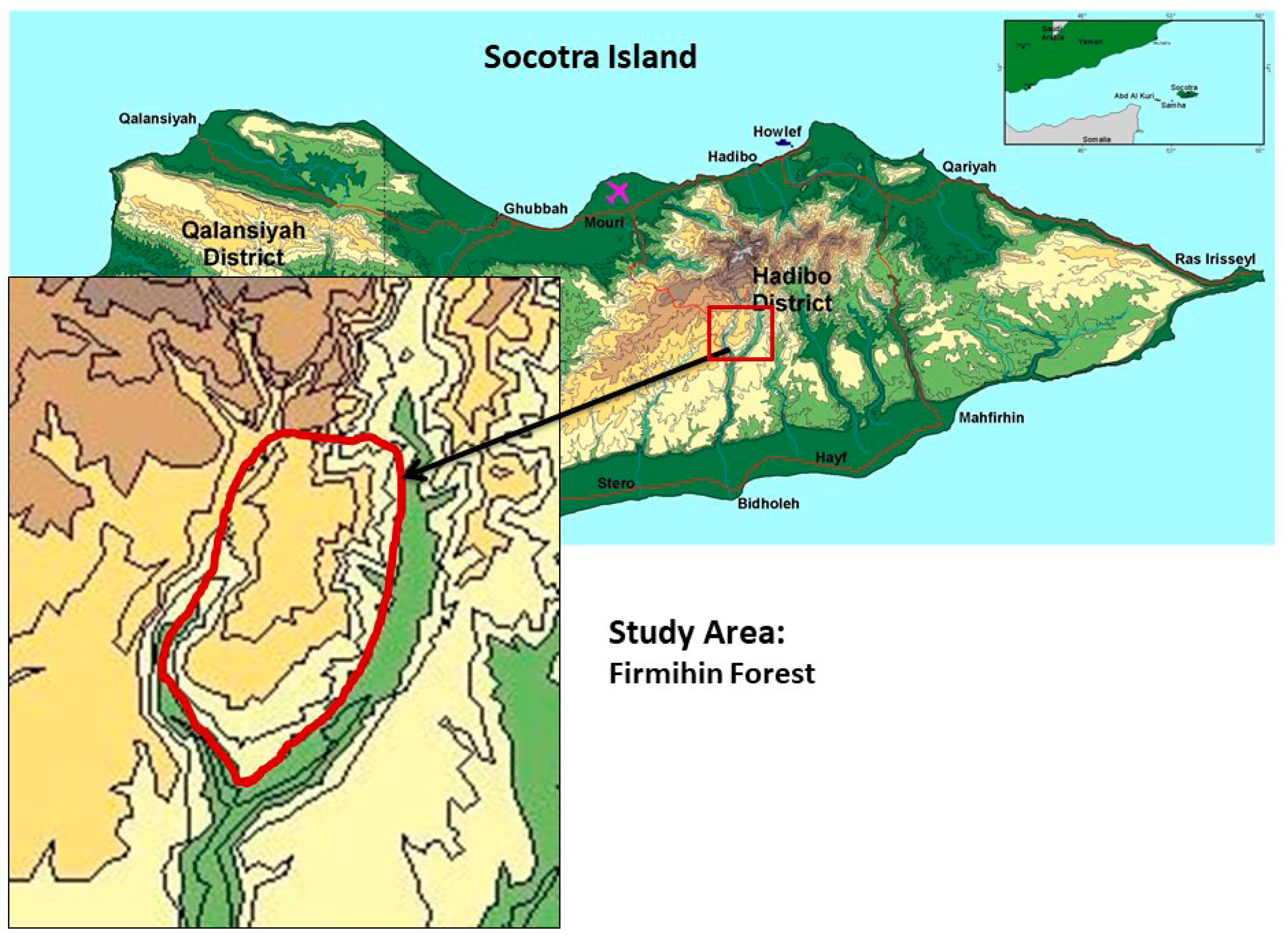
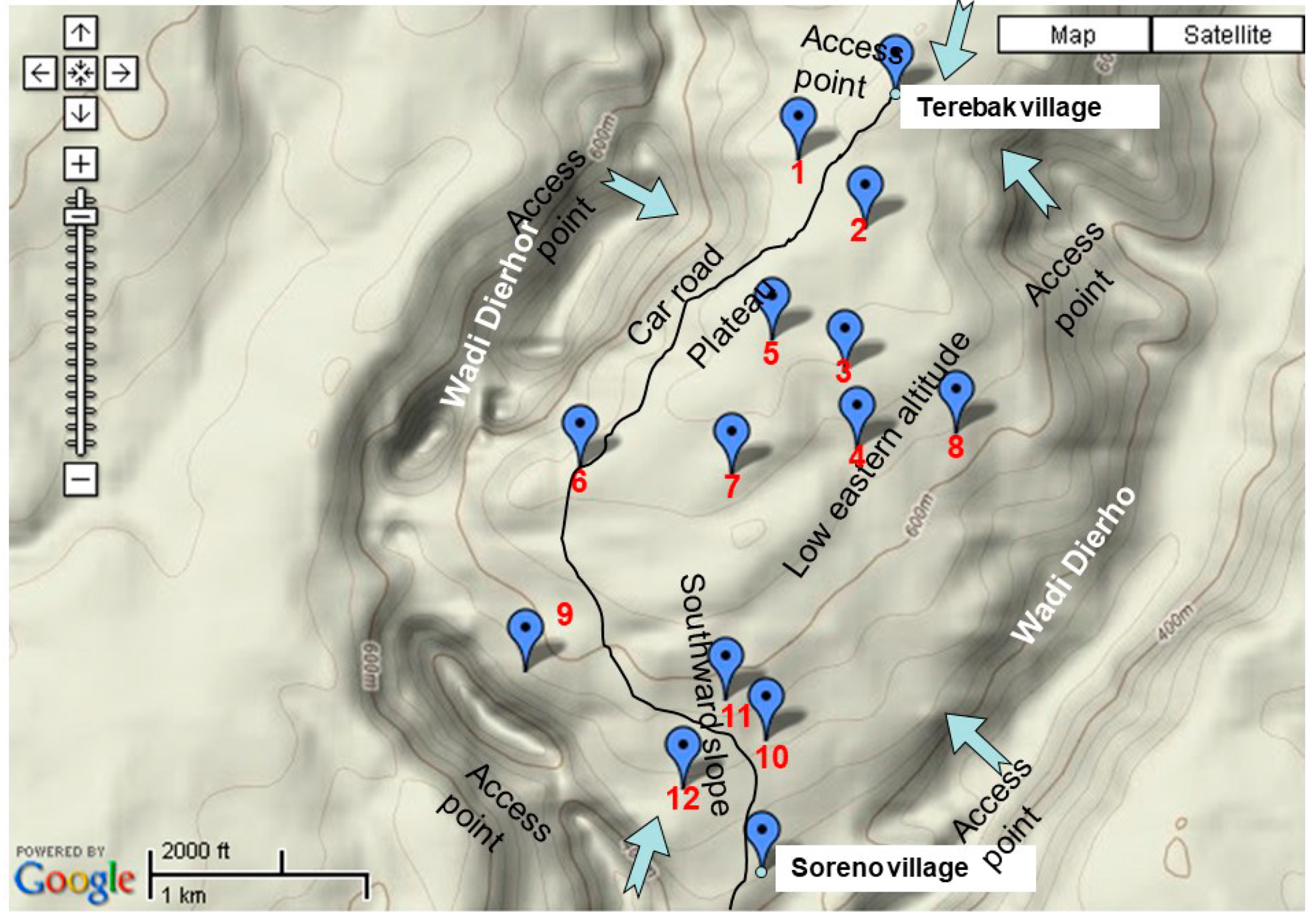
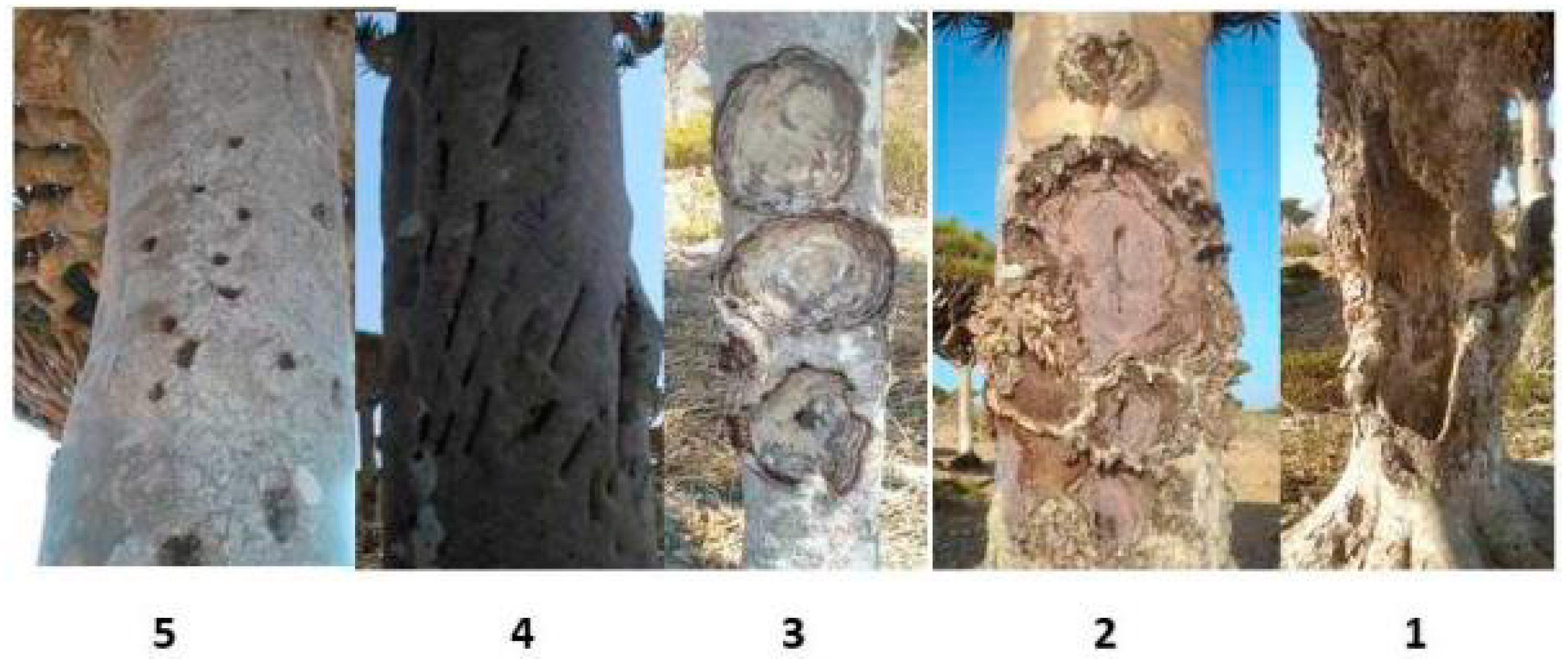
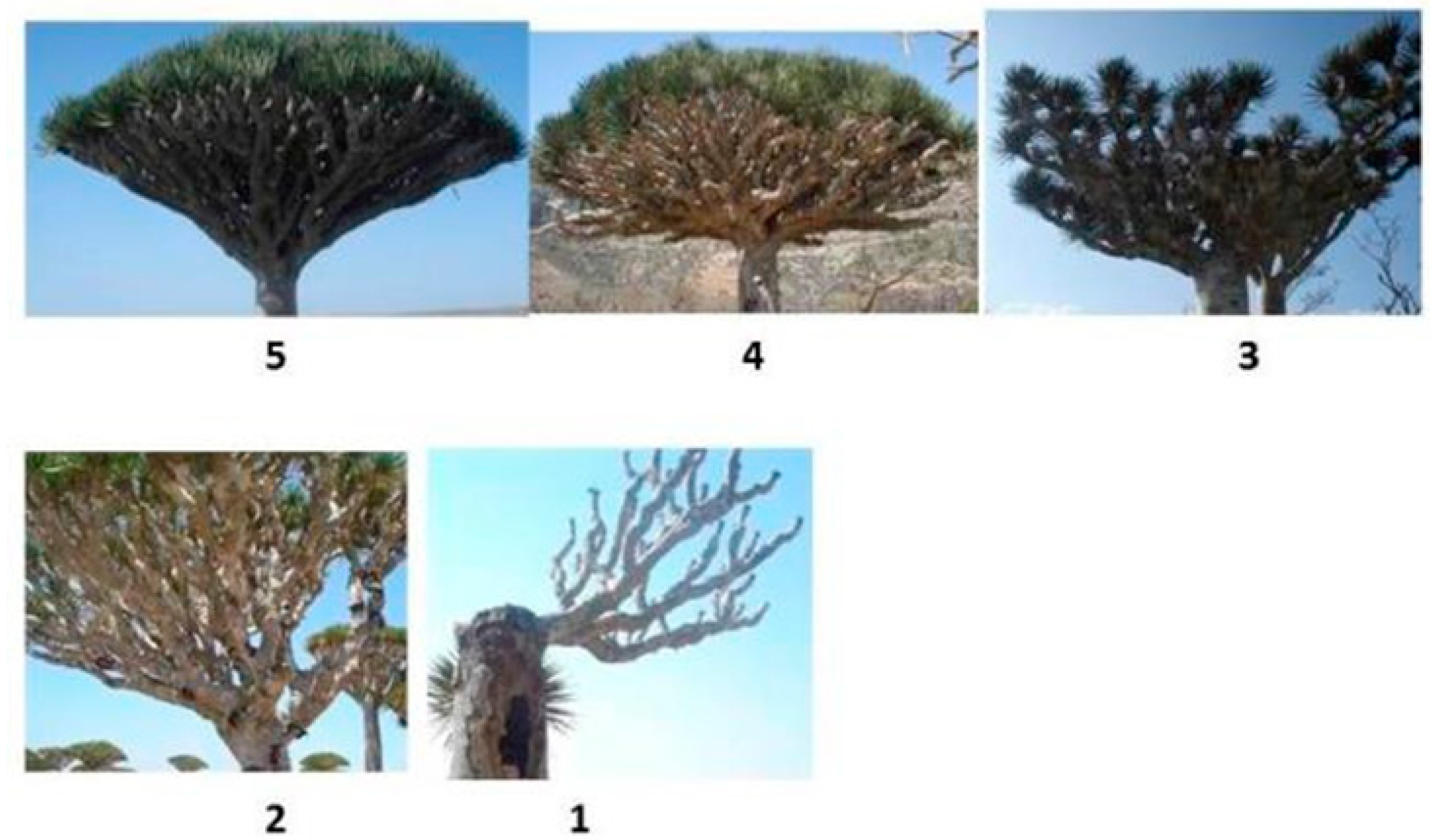

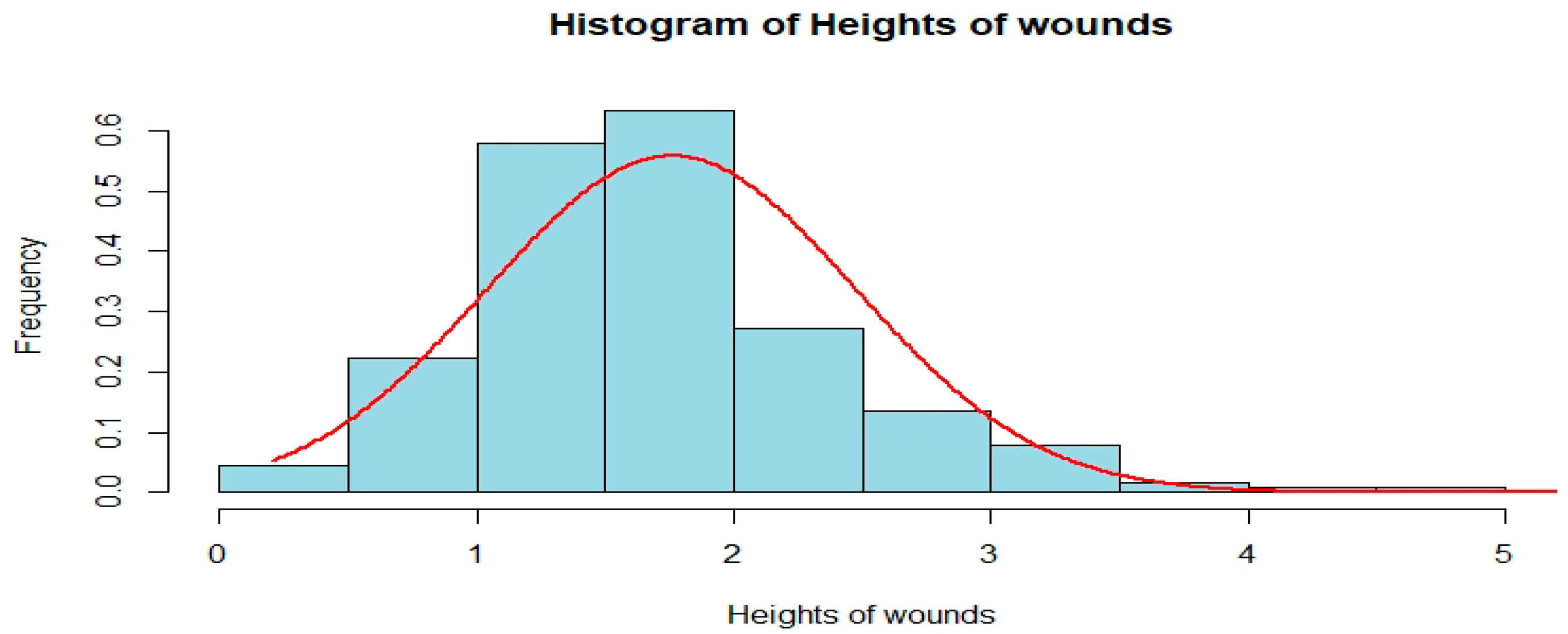
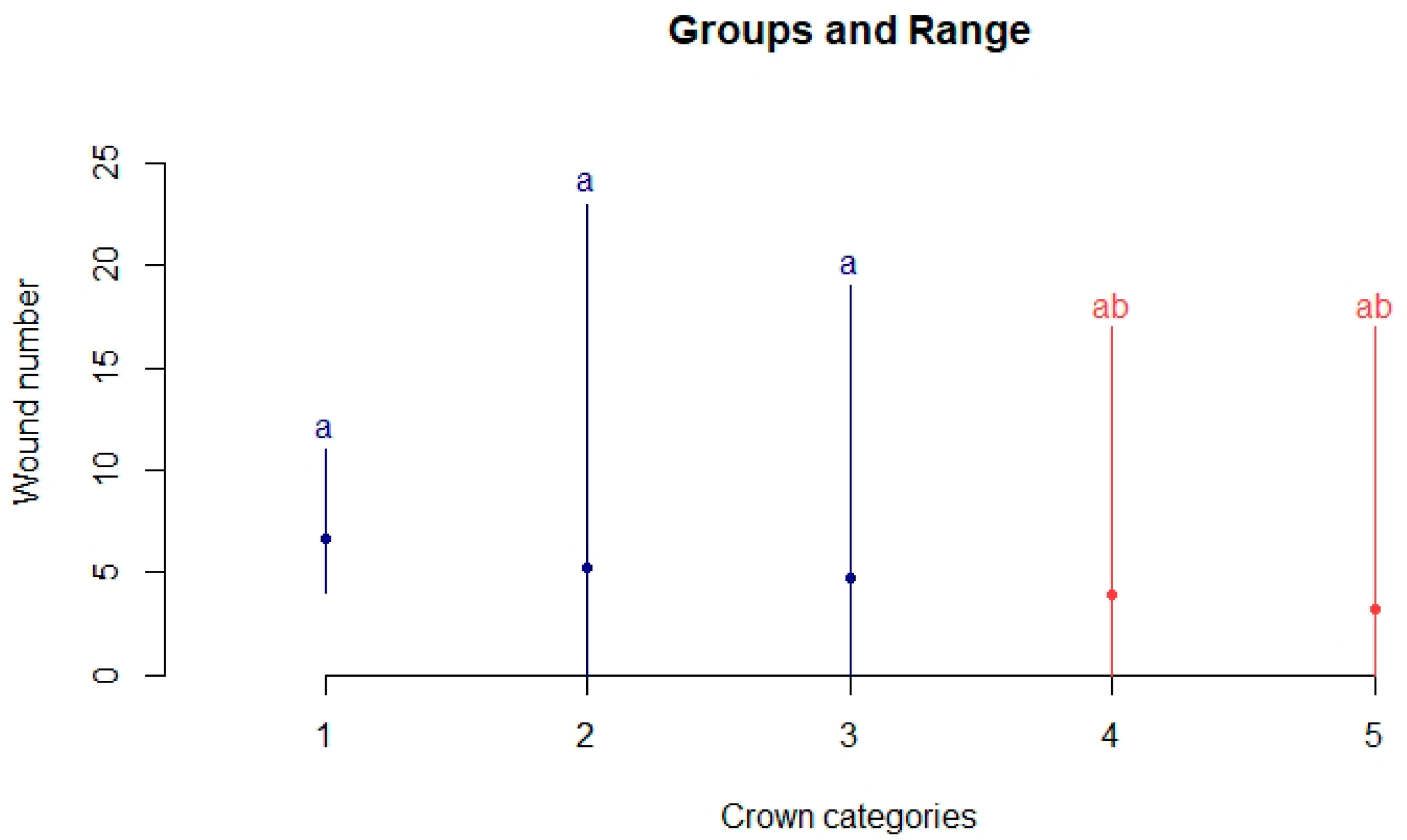
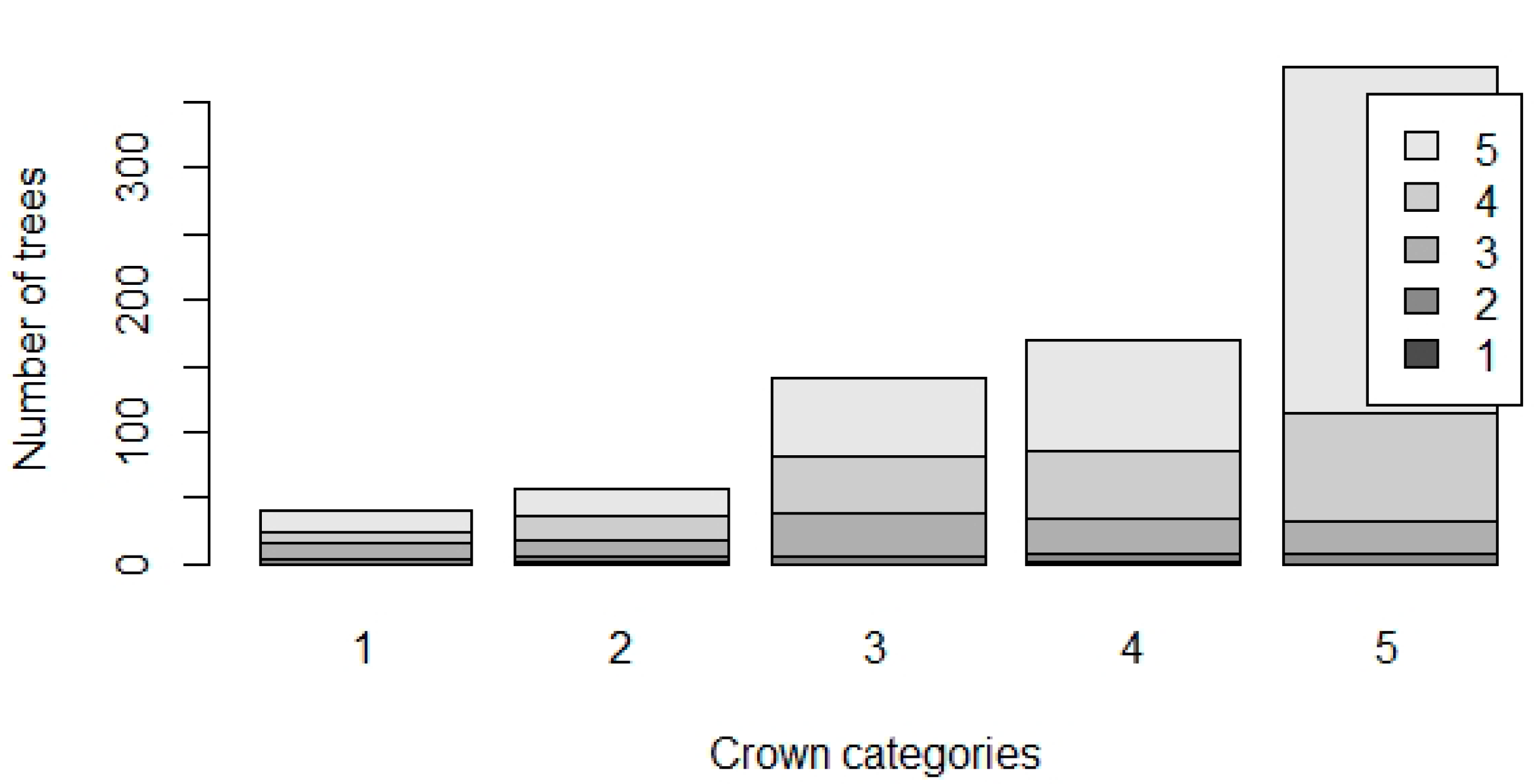
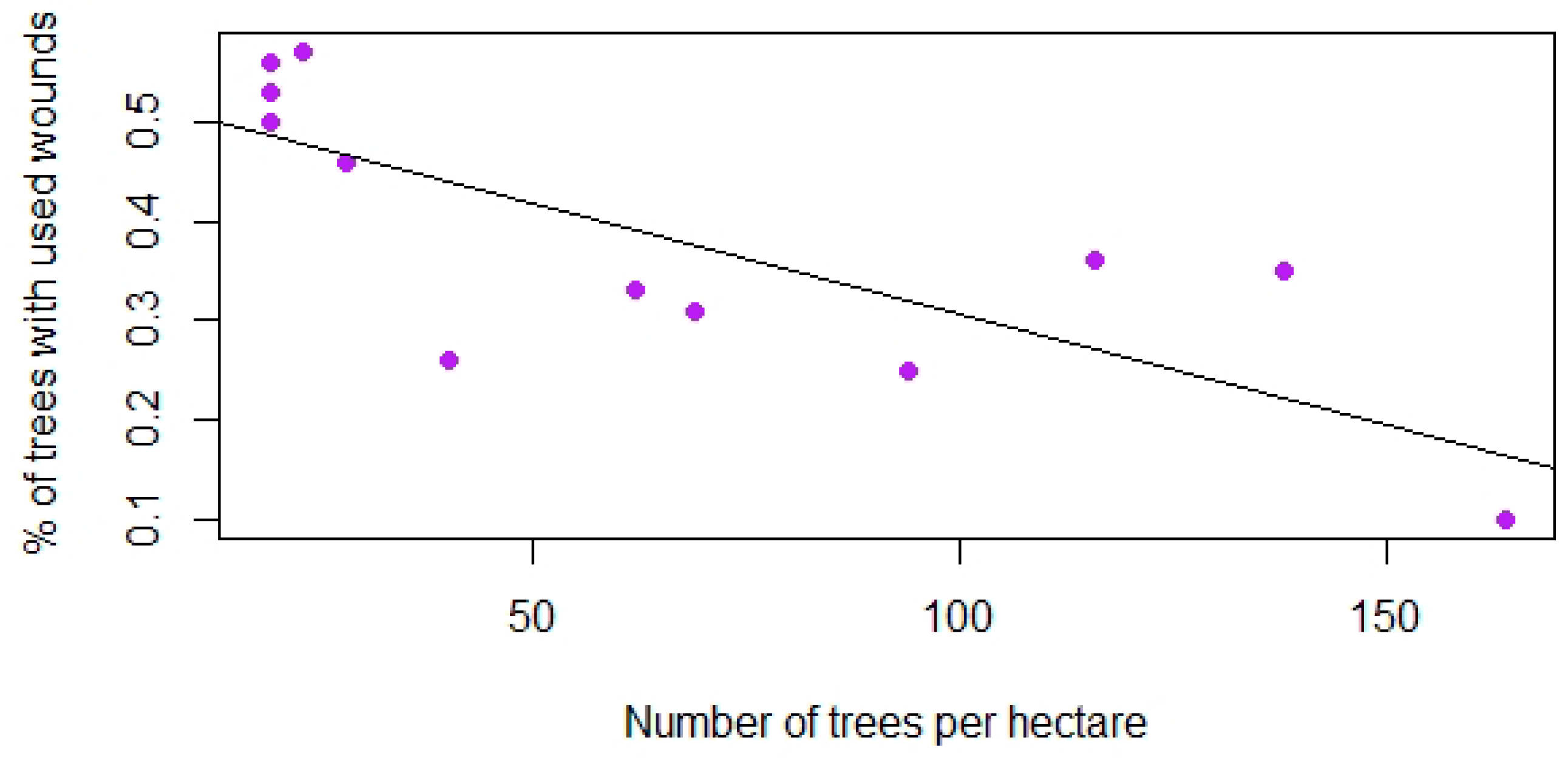
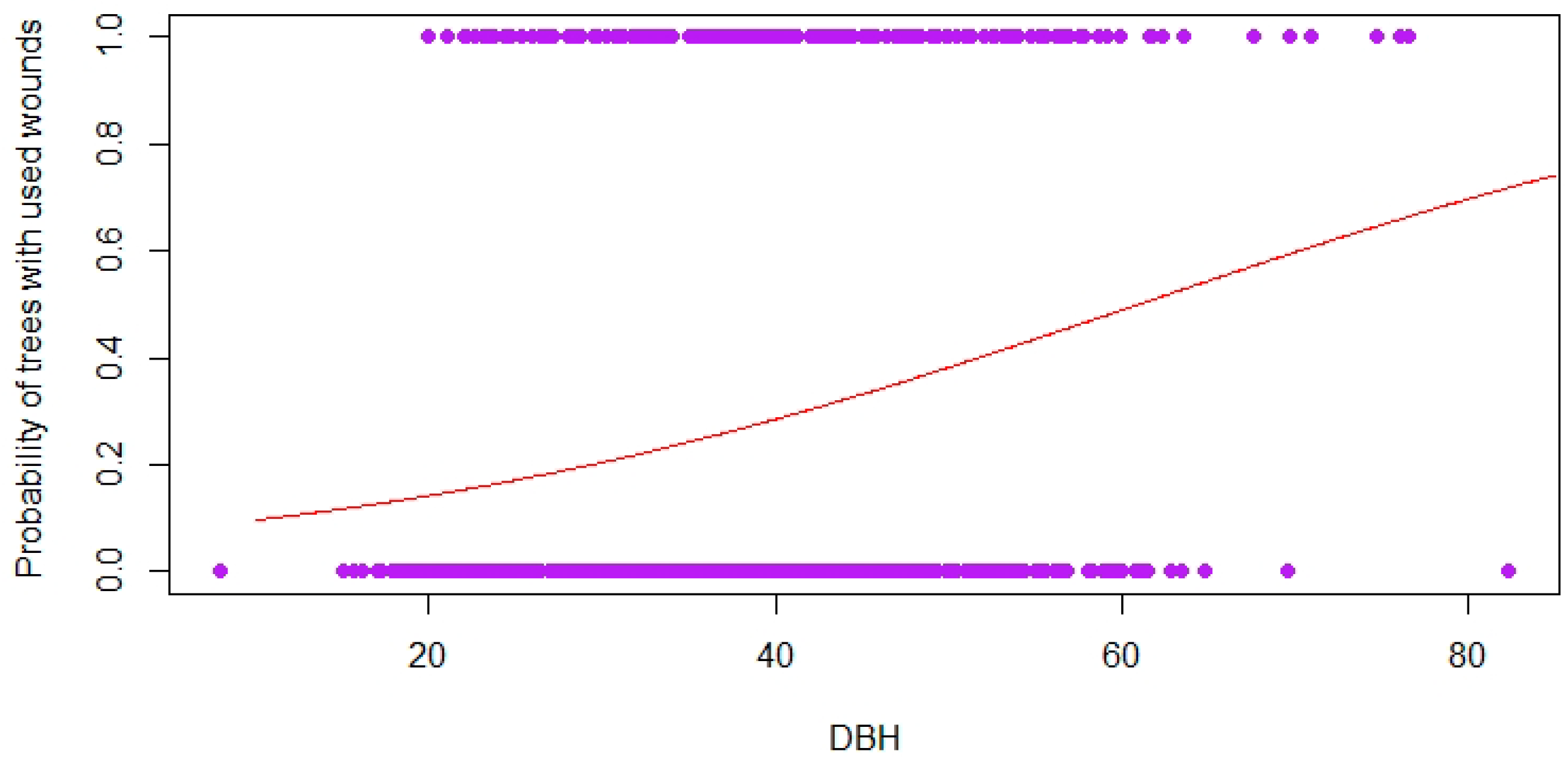
| Stratified Areas | Altitude | No. of Plots |
|---|---|---|
| (m.a.s.l) | (ID) | |
| Area 1 | 500–599 | 9, 10, 11, 12 |
| Area 2 | 600–699 | 4, 6, 8 |
| Area 3 | 700–799 | 1, 2, 3, 5, 7 |
| Area | Firmihin | Dierho | Shibehon | Total |
|---|---|---|---|---|
| Male | 22 | 11 | 9 | 42 |
| Female | 12 | 3 | 6 | 21 |
| 18 years | 10 | 2 | 1 | 13 |
| Total | 34 | 14 | 15 | 63 |
| Plot No. | Plots Area | No. of Living Trees | No. of Dead Trees | Total Trees | No. of Trees Measured for Wounds |
|---|---|---|---|---|---|
| (n) | (ha) | (n) | (n) | (n) | (n) |
| 1 | 1 | 94 | 0 | 94 | 47 |
| 2 | 1 | 138 | 5 | 143 | 69 |
| 3 | 1 | 40 | 0 | 40 | 20 |
| 4 | 1 | 164 | 5 | 169 | 79 |
| 5 | 1 | 69 | 4 | 73 | 36 |
| 6 | 1 | 28 | 1 | 29 | 14 |
| 7 | 1 | 19 | 0 | 19 | 10 |
| 8 | 1 | 116 | 2 | 118 | 57 |
| 9 | 1 | 19 | 0 | 19 | 10 |
| 10 | 1 | 23 | 2 | 25 | 12 |
| 11 | 1 | 62 | 3 | 65 | 32 |
| 12 | 1 | 19 | 6 | 25 | 15 |
| Total | 12 | 791 | 28 | 819 | 401 |
© 2020 by the author. Licensee MDPI, Basel, Switzerland. This article is an open access article distributed under the terms and conditions of the Creative Commons Attribution (CC BY) license (http://creativecommons.org/licenses/by/4.0/).
Share and Cite
Al-Okaishi, A. Local Management System of Dragon’s Blood Tree (Dracaena cinnabari Balf. f.) Resin in Firmihin Forest, Socotra Island, Yemen. Forests 2020, 11, 389. https://doi.org/10.3390/f11040389
Al-Okaishi A. Local Management System of Dragon’s Blood Tree (Dracaena cinnabari Balf. f.) Resin in Firmihin Forest, Socotra Island, Yemen. Forests. 2020; 11(4):389. https://doi.org/10.3390/f11040389
Chicago/Turabian StyleAl-Okaishi, Abdulraqeb. 2020. "Local Management System of Dragon’s Blood Tree (Dracaena cinnabari Balf. f.) Resin in Firmihin Forest, Socotra Island, Yemen" Forests 11, no. 4: 389. https://doi.org/10.3390/f11040389
APA StyleAl-Okaishi, A. (2020). Local Management System of Dragon’s Blood Tree (Dracaena cinnabari Balf. f.) Resin in Firmihin Forest, Socotra Island, Yemen. Forests, 11(4), 389. https://doi.org/10.3390/f11040389




